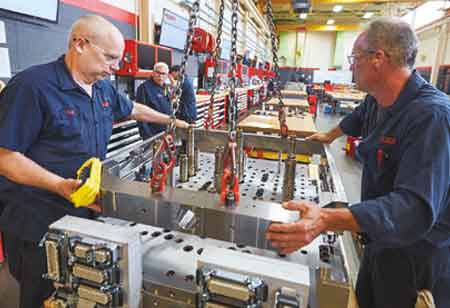THANK YOU FOR SUBSCRIBING

4 Biggest Mistakes to Avoid When Implementing Automation
Thomasv Gamble, Facility Engineering and Automation Manager, Hanesbrands

 Thomasv Gamble, Facility Engineering and Automation Manager, Hanesbrands
Thomasv Gamble, Facility Engineering and Automation Manager, HanesbrandsImplementing automation in manufacturing processes can bring numerous benefits, such as increased productivity, reduced costs, and minimized hiring challenges. However, ensuring the realization of these advantages requires careful consideration and proactive measures. Decision-makers must be aware of the most common mistakes made during the implementation of automation and take steps to manage associated risks effectively.
Detailed functional requirements specification
One prevalent mistake arises from the eagerness to expedite the implementation process. Often, leaders hastily sign agreements that contain placeholders such as “To Be Determined” (TBD) instead of clearly defined customer requirements. This ambiguity forces integrators to make assumptions about the desired outcomes, leading to minor errors that may reduce or compromise product quality. These mistakes may go unnoticed until the turnover phase is completed, causing delays and additional costs. To mitigate this risk, it is crucial to conduct a thorough risk assessment that addresses all the risks associated with a failure to meet each functional requirement. To monitor risks throughout the implementation process it is important to establish a governance model with stakeholder accountability.
Consideration of supply chain challenges
Even with the most advanced automation equipment, unexpected failures can occur. However, companies often overlook the potential difficulties associated with procuring replacement parts in a timely manner. If critical components are not readily available, the equipment may remain non-operational for extended periods, causing significant disruptions to production. A comprehensive assessment of critical spare parts availability and lead times is essential to avoid such setbacks. By selecting equipment from suppliers who can provide reliable support and maintain a well established supply chain, companies can minimize downtime and ensure continuous operation.
" With careful planning and meticulous execution, companies can unlock the full potential of automation and achieve their desired productivity and cost-saving objectives "
Data visibility and analysis
Once the robotic system is operational, it becomes imperative for the implementation team to comprehend its functioning. Data visibility tools play a vital role in investigating errors, identifying bottlenecks, and facilitating continuous improvement. By leveraging data analytics, teams can uncover valuable insights, optimize performance, and enhance overall system efficiency. Requiring the integrator to provide data analysis capabilities enables informed decision-making and empowers organizations to make necessary real-time adjustments.
Training and process documentation
Successful operation and maintenance of automated equipment heavily depend on well-documented processes and comprehensive training for employees. Inadequate documentation and insufficient training can lead to subpar results, particularly as turnover reduces workforce experience. Companies must prioritize thorough process documentation and develop comprehensive training programs to address this challenge. Clear instructions and standard operating procedures enable employees to understand system operations, troubleshoot issues effectively, and perform routine maintenance tasks. Continuous training initiatives and knowledge transfer strategies ensure that the organization remains equipped to handle any potential changes or challenges.
By recognizing and addressing these common mistakes, decision-makers can navigate the complexities of implementing automation more effectively. A proactive approach that emphasizes clearly defined functional requirements, robust supply chain management, data analytics capabilities, and comprehensive employee training will enhance the chances of a successful automation deployment. Furthermore, establishing proper governance and risk management protocols throughout the implementation process will help organizations effectively maintain control and mitigate potential risks. With careful planning and meticulous execution, companies can unlock the full potential of automation and achieve their desired productivity and cost-saving objectives.
Read Also





















ON THE DECK